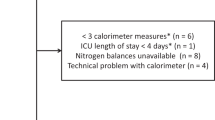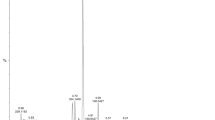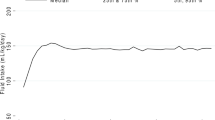Abstract
ABSTRACT: We estimated the metabolic rate of 13 low birth weight infants over a 9-day period, using indirect calorimetry in conjunction with serial measurements of oxygen consumption, carbon dioxide production, and total urinary nitrogen excretion. The mean percent error for oxygen consumption and carbon dioxide production measurements (determined by alcohol combustion experiments) assignable to the open-circuit system was 0.4 and 3.8%, respectively. Error in the total urinary nitrogen excretion measurement was <1% by the Kjeldahl technique. In the clinical setting, however, the range of deviation of measured oxygen consumption, carbon dioxide production and total urinary nitrogen excretion was ±12, 12, and 15% of the mean value respectively for an individual patient under standardized controlled conditions. The variability of metabolic rate between infants may be as much as 76%. Factors that had a small effect on metabolic rate were difficult to detect because of the variability inherent in the short-term measurement of metabolic rate. It was virtually impossible to control the sources of variation in the resting metabolism of low birth weight neonates over extended experimental periods. Day-to-day variations in resting energy expenditure may explain, in part, the widely different growth rates of premature infants receiving similar caloric intakes.
Similar content being viewed by others
Article PDF
Author information
Authors and Affiliations
Rights and permissions
About this article
Cite this article
Marks, K., Nardis, E. & Derr, J. Day-to-Day Energy Expenditure Variability in Low Birth Weight Neonates. Pediatr Res 21, 66–71 (1987). https://doi.org/10.1203/00006450-198701000-00015
Received:
Accepted:
Issue Date:
DOI: https://doi.org/10.1203/00006450-198701000-00015



